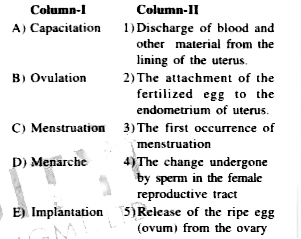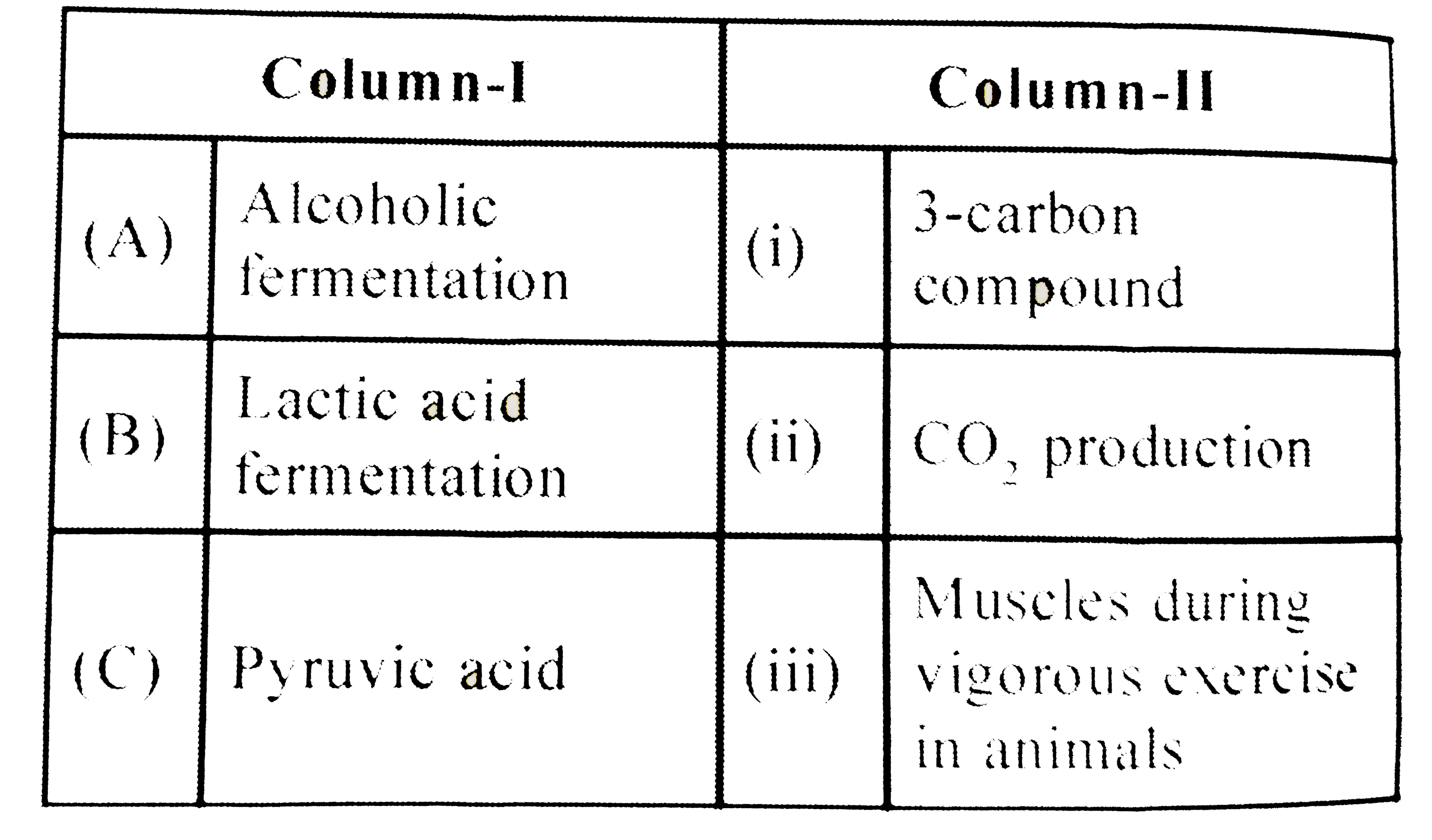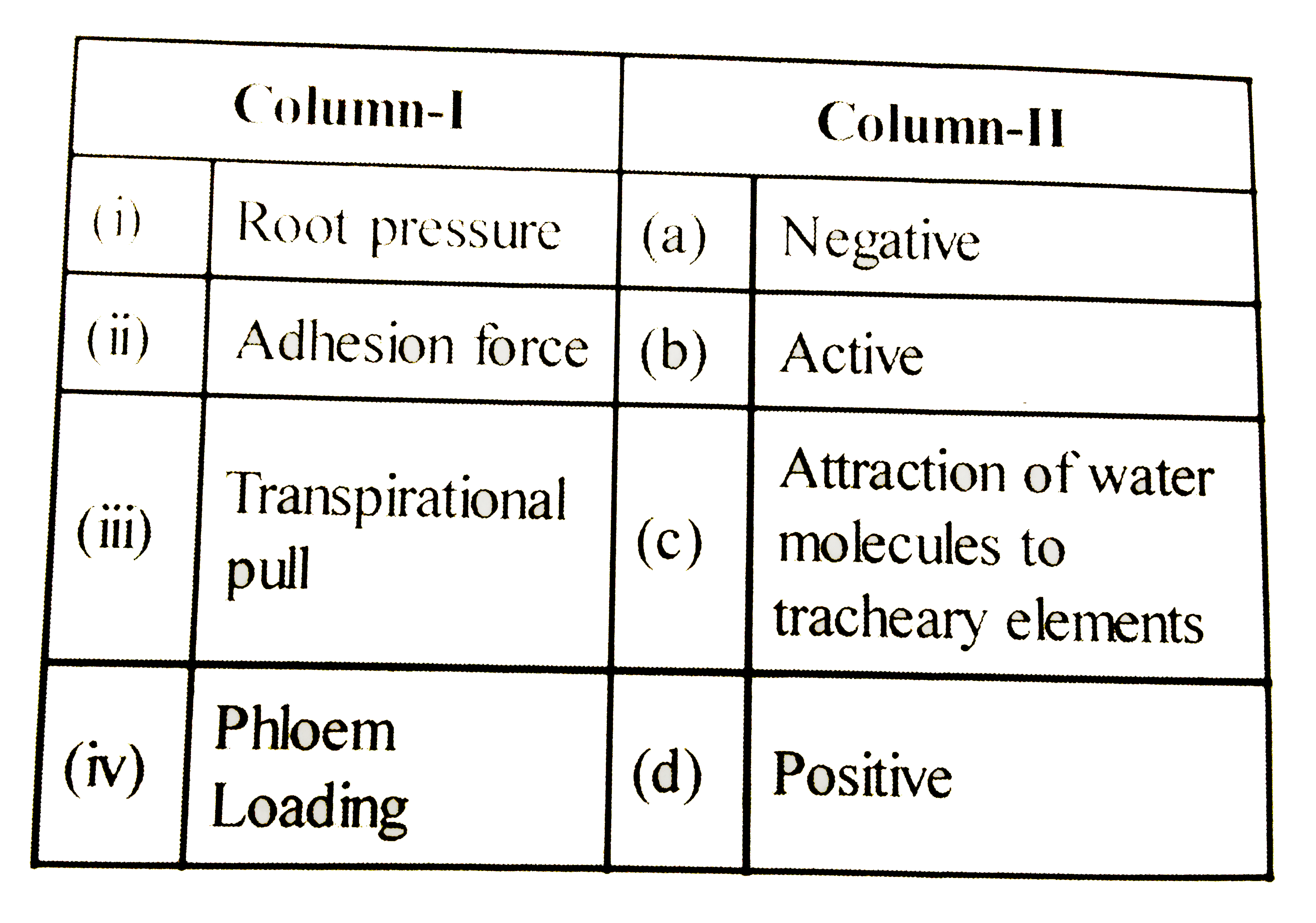Match the methods of concentration of ore given in column-I with the different ores given in column-II and select the correct option.
column-I (I) magnetic separation (II) froth flotation (III) hydraulic washing column-II (a) Cu2S(b)Fe3O4(c)Al2(SiO3)
I(a), II(b), III(c)
I(b), II(a), III(c)
I(c), II(a), III(b)
I(b), II(c), III(a)
The correct Answer is:B
To solve the problem of matching the methods of concentration of ore from Column-I with the different ores from Column-II, we will analyze each method and its corresponding ore step by step.
Step 1: Analyze Magnetic Separation
- Magnetic Separation is a method used when either the ore or the impurities are magnetic in nature.
- In Column-II, we have Fe3O4, which is known as magnetite. Magnetite is magnetic.
- Therefore, the correct match for Magnetic Separation is (b) Fe3O4.
Step 2: Analyze Froth Flotation
- Froth Flotation is a method used for the concentration of sulfide ores.
- In Column-II, we have Cu2S, which is the sulfide ore of copper.
- Therefore, the correct match for Froth Flotation is (a) Cu2S.
Step 3: Analyze Hydraulic Washing
- Hydraulic Washing (also known as gravity separation) is used when the ore is heavy and the impurities are lighter.
- In Column-II, we have Al2(SiO3), which is heavier than the impurities.
- Therefore, the correct match for Hydraulic Washing is (c) Al2(SiO3).
Final Matching
Now we can summarize the matches:
1. Magnetic Separation - (b) Fe3O4
2. Froth Flotation - (a) Cu2S
3. Hydraulic Washing - (c) Al2(SiO3)
Thus, the final answer is:
- (I) Magnetic Separation - (b) Fe3O4
- (II) Froth Flotation - (a) Cu2S
- (III) Hydraulic Washing - (c) Al2(SiO3)
Correct Option
The correct option is the one that matches these pairs, which is Option 2.
---
- Magnetic Separation is a method used when either the ore or the impurities are magnetic in nature.
- In Column-II, we have Fe3O4, which is known as magnetite. Magnetite is magnetic.
- Therefore, the correct match for Magnetic Separation is (b) Fe3O4.
- Froth Flotation is a method used for the concentration of sulfide ores.
- In Column-II, we have Cu2S, which is the sulfide ore of copper.
- Therefore, the correct match for Froth Flotation is (a) Cu2S.
- Hydraulic Washing (also known as gravity separation) is used when the ore is heavy and the impurities are lighter.
- In Column-II, we have Al2(SiO3), which is heavier than the impurities.
- Therefore, the correct match for Hydraulic Washing is (c) Al2(SiO3).
Now we can summarize the matches:
1. Magnetic Separation - (b) Fe3O4
2. Froth Flotation - (a) Cu2S
3. Hydraulic Washing - (c) Al2(SiO3)
- (I) Magnetic Separation - (b) Fe3O4
- (II) Froth Flotation - (a) Cu2S
- (III) Hydraulic Washing - (c) Al2(SiO3)
The correct option is the one that matches these pairs, which is Option 2.
Topper's Solved these Questions
Similar Questions
Match the terms column-I with their functions in column-II and select the correct option

View SolutionMatch the terms column-I with their functions in column-II and select the correct option

View SolutionMatch the terms column-I with column-II and select the correct option

View SolutionMatch the terms column-I with column-II and select the correct option

View SolutionMatch column I with column II and select the correct option.

View SolutionMatch column I with column II and select the correct option.

View SolutionMatch column -I with column-II and select the correct option :-

View SolutionMatch the column-I with column-II and select the correct option :

View SolutionMatch the column-I with column -II and select the correct option :

View SolutionMatch the column I with column II and select the correct option

View Solution
